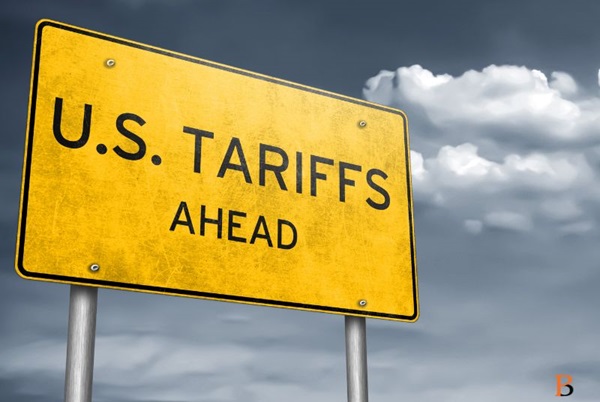.png)
RBI’s Optimism On Growth Belies Tariff Undercurrent
The central bank’s inflation optimism is justified, but its 2025–26 growth forecast feels increasingly out of touch with trade war disruptions.


Groupthink is the House View of BasisPoint’s in-house columnists.
April 9, 2025 at 9:28 AM IST
India’s central bank is betting on a soft landing at a time when the world economy is heading into fresh turbulence. On Wednesday, the Reserve Bank of India lowered both its inflation and growth projections for 2025–26 by 20 basis points, but signalled an intent to support activity by cutting the policy rate to 6.00% and switching its stance to accommodative. While this policy tilt is welcome, the central bank’s assumption of 6.5% GDP growth looks misplaced given the evolving global landscape.
The Monetary Policy Committee cited “new headwinds” from the sharp escalation in global trade tensions following the United States’ unilateral tariff hikes. Yet its baseline GDP growth forecast implies that India will shrug off these external shocks with remarkable ease. With the global economy under strain, India’s export-facing sectors will almost certainly take a hit, as will the pace of capital formation. Even with some domestic tailwinds — including rural demand, stable balance sheets, and signs of consumption recovery — sustaining 6.5% growth will be an uphill task.
The policy pivot appears to be driven by a benign inflation trajectory. With February CPI at 3.61% and vegetable prices dragging food inflation into negative territory, the RBI now sees 2025–26 inflation at 4.0%, its lowest in six years and squarely within its medium-term target. Quarterly projections are also comfortably under control, except for a modest uptick to 4.4% in the January–March quarter.
This gives the central bank room to maintain a growth-supportive bias. The consecutive 25-basis-point cut, and the stance change suggests more easing may follow. Markets will now begin to price in an extended rate-cut cycle — but the policy space remains contingent on imported inflation staying tame. Any escalation in global tariffs could jolt commodity prices and rekindle input cost pressures, especially in energy and metals.
Forecast Fatigue
What’s puzzling is the central bank’s insistence on sticking close to its earlier growth trajectory despite trimming forecasts. With GDP growth in the April–June quarter projected at 6.5% and only a mild deceleration over the rest of the year, the RBI appears to underestimate the cumulative drag from supply chain disruptions and weaker external demand. For a country that clocked 9.2% growth in 2023–24, the slowdown is already steep. Yet, the RBI’s tone remains oddly upbeat.
At best, the RBI’s forecast reflects strategic optimism — or perhaps a deliberate signalling choice, aimed at anchoring sentiment in a fragile investment climate. At worst, it underestimates the scale of external disruption already in motion. If global trade tensions escalate further, as they seem likely to, the central bank may find itself revising these projections sooner than expected. For now, markets may welcome the dovish turn, but they should remain clear-eyed about the risks clouding the path ahead.



